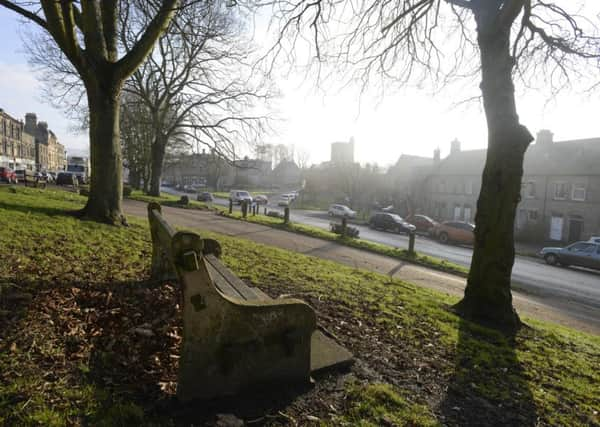Rothbury, History Society


Tynemouth Castle and Priory saw invasions and power struggles, dating from its original simple structures to the destruction of a prosperous, influential and politically-involved community, governed by a powerful prior.
Northumbria was at one point a vast area stretching from the Clyde and Forth to the Humber and Chester. Armies were relatively small, about 600 men, but they were well equipped and trained affluent soldiers, able to move quickly and efficiently over great distances, the peasants remaining at home to farm.
Advertisement
Hide AdAdvertisement
Hide AdThe priory was founded in the early 7th century, probably by Edwin of Northumbria. Bede referred to it in his writings.
Three kings were buried there. The first, Oswin, was murdered in 651. He was canonised and his burial place became a shrine, much visited by pilgrims. This became a source of great wealth, gifts and money being offered.
Osred II was the second king to be buried. He was also murdered.
The third king was Malcolm, King of Scotland, who was killed at the Battle of Alnwick in 1093. This is referred to by Shakespeare in Macbeth.
Advertisement
Hide AdAdvertisement
Hide AdIn 800, the Danes plundered the priory, and while attempts were made to improve fortifications, there were further invasions. In 875, the priory was destroyed and the people massacred.
In 1074 the Earl of Northumbria, last of the Anglo Saxon earls, granted the church to the monks of Jarrow, and in 1090 Robert de Mowbray rebuilt the monastery, colonised by monks from St Albans.
A picture is painted of turbulent times, with warring families and bitter disputes. Succession regards the castle went to adult family members, not young children of the king, so there were uprisings, in-fighting and murders.
Lands were left to the priory and it became very wealthy. Sanctuary could be claimed there as it was ‘a Liberty’. Local villagers were protected from the law of the king and were under the rule of the prior, to whom they owed allegiance and paid an annual tax. If sufficient money was paid, the prior enabled offenders to escape by ship from Tynemouth.
Advertisement
Hide AdAdvertisement
Hide AdThe priory became increasingly rich and powerful. The fishing port of North Shields was established and developed in the 11th to 12th centuries.
This was seen as illegal as Newcastle was prevented from collecting taxes for the king. In 1294 the priory was invaded and the prior taken in chains to St Albans.
In 1312 King Edward II took refuge in the castle and his illegitimate son Adam Fitzroy was buried there. His body was covered in a cloth of silk and gold, which is now in Durham Cathedral.
In 1538 the monastery was disbanded by Henry VIII, who retained the castle and added new fortifications to strengthen the walls against the threat from Spain, France and Scotland. The priory and lands were granted to Sir Thomas Hilton. All valuables were removed, the shrines broken up and Oswin’s bones scattered.
Advertisement
Hide AdAdvertisement
Hide AdIt was the birthplace of Henry Percy, IX Earl of Northumberland, in 1564, when his father was guardian of the castle.
The Civil War saw the last military action, but the site retained an important role in the county’s defence. King Charles I was held there during negotiations about his future.
A medieval tower still stands. The north and east walls have fallen into the sea.
The next meeting is on Friday, November 17, in the Jubilee Hall, Rothbury, when Dr Liz O’Donnell’s talk will be Hens That Want To Crow.